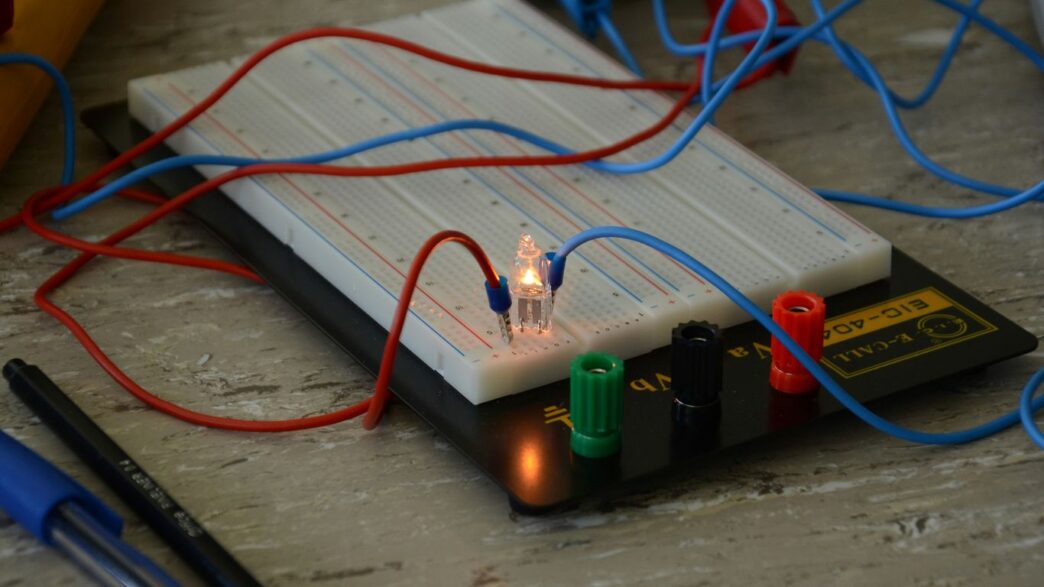The semiconductor industry is moving fast, and keeping up can feel like a marathon. If you’re looking to get ahead or tackle a tricky project, bringing in an expert can make a big difference. But how do you find the right semiconductor consultant to help you out? This guide is here to break it down, making it easier to pick the best person for the job.
Key Takeaways
- Figuring out why you need a semiconductor consultant is the first step. Think about how complex the industry is and what you hope to gain from outside help.
- There are different types of help a semiconductor consultant can give, like with design, making things, or sorting out your supply chain.
- When you’re looking for a consultant, check if they really know their stuff, if they’ve worked in similar situations before, and what other clients say about them.
- Once you decide to work with someone, be clear about what you need done, how they’ll be paid, and how you’ll talk to each other.
- To get the most out of your semiconductor consultant, work together closely, keep track of what’s working, and think about future projects.
Understanding The Need For A Semiconductor Consultant

It’s no secret that the world runs on chips these days. From the phone in your pocket to the car you drive, semiconductors are everywhere. The industry that makes them is incredibly complex and moves at lightning speed. Keeping up with all the changes, especially if it’s not your main gig, can feel like trying to catch a greased piglet. That’s where semiconductor consultants come in. They’re the folks who really know their stuff and can help you figure out the best way forward.
The Growing Demand For Semiconductor Expertise
The semiconductor market is booming. We’re talking about a global market valued at hundreds of billions of dollars, with projections to hit a trillion by 2030. This isn’t just about computers and phones anymore, either. Cars, smart home devices, and all sorts of new tech are gobbling up chips. This massive growth means there’s a huge need for people who understand how to design, make, and use these tiny but mighty components. Staying on top of what skills are hot right now is key to getting ahead. Think about it: skills in making low-power devices or sustainable manufacturing are becoming super important. Plus, with new frontiers like quantum computing opening up, the demand for specialized knowledge is only going to get bigger.
Navigating Industry Complexity
Let’s be real, the semiconductor industry is a maze. You’ve got different stages like design, manufacturing (which itself has front-end and back-end processes), testing, and then getting the final products out there. Each step involves specialized companies and technologies. Add in global supply chain hiccups, trade issues, and the constant push for new innovations, and it’s easy to get lost. Trying to figure out the best way to source materials, optimize your manufacturing, or even just understand the latest tech trends can be a real headache. It’s a field where a little expert guidance can save you a lot of time and money.
Strategic Advantages Of External Guidance
Bringing in an outside consultant isn’t just about getting help; it’s a smart move. They offer a fresh perspective, unclouded by internal politics or old habits. Consultants bring specialized knowledge that your in-house team might not have, especially in niche areas or when you need to adapt to rapid market shifts. They can help you:
- Identify new market opportunities: Spotting where the next big demand for chips will come from.
- Streamline your operations: Making your design or manufacturing processes more efficient.
- Mitigate supply chain risks: Finding ways to avoid shortages or disruptions.
- Adopt new technologies: Helping you understand and implement cutting-edge advancements.
Basically, they act as your guide through the complicated semiconductor landscape, helping you make better decisions and stay competitive.
Identifying Key Areas Of Semiconductor Consulting
So, you’re looking to bring in some outside help for your semiconductor project. That’s smart. This industry is incredibly complex, and sometimes you just need a fresh perspective or some specialized know-how that you don’t have in-house. Consultants can really fill those gaps. But what exactly do they do? It’s not just one thing; it’s a whole range of services designed to help companies at different stages of the semiconductor lifecycle. Think of them as specialists who can jump in, solve a specific problem, or help you plan for the future.
Design And Development Support
This is where a lot of the magic happens, right at the beginning. Consultants can help you brainstorm new chip ideas, figure out the best architecture, and even get into the nitty-gritty of circuit design. They might help you choose the right tools, set up your design environment, or even do some of the actual design work if you’re short on hands or specific skills. They’re also great for reviewing designs to catch potential issues before you spend a fortune on manufacturing. It’s all about making sure the product you envision can actually be built and will perform as expected.
Manufacturing Process Optimization
Once you have a design, you need to make it. This is where manufacturing comes in, and it’s a whole different ballgame. Consultants in this area focus on making the production process smoother, faster, and cheaper. They look at things like yield (how many good chips you get out of each wafer), equipment efficiency, and material usage. They might suggest changes to your fabrication steps, help you implement new testing procedures, or troubleshoot problems that are causing delays or defects. Getting your manufacturing process right is key to profitability.
Supply Chain And Logistics Management
Semiconductor supply chains are notoriously complicated. Think about all the different materials, components, and manufacturing steps that happen all over the world. Consultants can help you map out your entire supply chain, identify risks (like potential shortages or geopolitical issues), and find ways to make it more resilient. They can also help with inventory management, transportation, and making sure you have the right parts at the right time. It’s about keeping the flow of goods moving without a hitch.
Market Analysis And Strategy
Beyond the technical stuff, consultants can also help you figure out where the market is heading. They can research competitors, analyze customer needs, and help you develop a strategy for launching new products or entering new markets. This might involve looking at trends in areas like artificial intelligence, the Internet of Things, or automotive electronics. They can help you understand the business side of things, so your technical efforts are aligned with what customers actually want and what the market will bear.
Evaluating Potential Semiconductor Consultants

So, you’ve decided you need some outside help with your semiconductor projects. That’s a smart move, but now comes the tricky part: picking the right consultant. It’s not like choosing a new phone; this is about bringing someone in who can genuinely make a difference to your bottom line and your technical roadmap. You don’t want just anyone; you want someone who really gets it.
Assessing Technical Proficiency
This is probably the most obvious thing to check. Do they actually know their stuff? You’re not just looking for someone who can talk the talk; you need someone who can walk the walk. Ask about their background, what kind of projects they’ve worked on, and what specific technologies they’re familiar with. A good consultant should be able to explain complex technical concepts clearly and concisely, without making you feel like you need a PhD to understand them.
Think about it like this: if you’re building a custom chip for a new AI application, you don’t want a consultant who only knows about basic logic gates. You need someone who understands advanced architectures, maybe even specialized AI accelerators. Ask them about specific design tools they use, simulation methodologies, and verification techniques. If they get vague or defensive, that’s a red flag.
Reviewing Industry Experience
Technical smarts are one thing, but real-world experience in the semiconductor industry is another. The industry moves fast, and it has its own unique set of challenges and players. A consultant who has spent years working in different parts of the semiconductor ecosystem – maybe in design, manufacturing, or even supply chain – will have a much better grasp of what you’re up against.
Consider these points:
- Have they worked with companies similar to yours? A consultant who’s helped a startup might have a different approach than one who’s worked with a giant corporation. What fits your situation best?
- What specific market segments have they focused on? Are they experts in automotive chips, consumer electronics, or high-performance computing? Make sure their experience aligns with your product goals.
- How long have they been in the industry? While newer consultants can be sharp, those with a longer track record often bring a wealth of lessons learned from past projects and market shifts.
Checking Client Testimonials and References
Don’t just take their word for it. See what other people have said about working with them. Good consultants will have a list of satisfied clients willing to vouch for their work. Ask for references and actually call them. This is your chance to get the inside scoop.
When you talk to references, ask specific questions:
- What was the biggest challenge the consultant helped you overcome?
- How did they handle unexpected problems or changes in project scope?
- Were they good at communicating and keeping you informed?
- Would you hire them again?
Looking at testimonials or case studies on their website is a start, but a direct conversation with a past client can give you a much clearer picture of what it’s like to work with them. It’s like asking a friend for a review before you buy something online – way more trustworthy than just the product description.
The Engagement Process With A Semiconductor Consultant
So, you’ve decided to bring in some outside help for your semiconductor project. That’s a smart move. But how do you actually get started with a consultant? It’s not just about picking someone and handing over a problem. There’s a process to it, and getting it right means you’ll get way more out of the deal. Think of it like building a custom race car – you need the right blueprints, the right parts, and a clear plan before you even turn the key.
Defining Project Scope And Objectives
Before you even talk to a consultant, you need to know what you want. What exactly are you trying to achieve? Is it a specific design challenge, a manufacturing bottleneck, or maybe figuring out where your product fits in the market? Be as clear as possible. Write it down. This isn’t just for the consultant; it helps you organize your own thoughts.
- What’s the main goal? (e.g., Reduce manufacturing defects by 15%, develop a new chip architecture for AI, improve supply chain efficiency).
- What are the smaller steps to get there? (e.g., Analyze current process, identify root causes, propose solutions, test new methods).
- What does success look like? (e.g., A working prototype, a documented process improvement, a market entry strategy).
Understanding Fee Structures And Contracts
Consultants have different ways of charging. Some charge by the hour, others by the project, and some might have a retainer fee. It’s important to understand this upfront. Don’t be shy about asking questions.
Here’s a quick look at common structures:
| Fee Structure | Description |
|---|---|
| Hourly Rate | You pay for the actual time the consultant spends working on your project. |
| Fixed Project Fee | A set price for the entire project, agreed upon before work begins. |
| Retainer | A recurring fee, usually monthly, for ongoing access to the consultant’s time. |
| Performance-Based | A portion of the fee is tied to achieving specific, measurable results. |
Make sure the contract clearly spells out:
- The exact services to be provided.
- The payment schedule and terms.
- Who owns the intellectual property developed during the project.
- How disagreements will be handled.
Establishing Communication Protocols
Good communication is the backbone of any successful collaboration. You need to know how and when you’ll be talking to your consultant. This prevents misunderstandings and keeps things moving.
- Regular Check-ins: How often will you meet? Weekly? Bi-weekly? What format will these meetings take (in-person, video call, phone)?
- Reporting: What kind of updates will you receive, and how often? Will there be formal reports, or just email summaries?
- Point of Contact: Who is your main contact person on the consultant’s side, and who on your side will be the primary liaison?
- Escalation Path: What happens if there’s a major issue that needs immediate attention? Who do you go to?
Maximizing Value From Your Semiconductor Consultant
So, you’ve brought in a semiconductor consultant. That’s a big step, and it means you’re serious about getting the most out of this partnership. It’s not just about hiring someone to do a job; it’s about making sure their input actually makes a difference for your business. Think of it like hiring a really good mechanic for your car – you don’t just want them to fix it, you want them to make it run better than ever, and maybe even teach you a thing or two so you don’t have the same problem next month.
Fostering Collaboration and Knowledge Transfer
This is where the real magic happens. A consultant brings outside smarts, but if that knowledge walks out the door with them when the contract ends, you’ve kind of missed the point. You want them to work with your team, not just for them. This means open communication, sharing information freely, and making sure your own people are learning as much as possible.
- Regular Check-ins: Set up weekly or bi-weekly meetings. It’s not just for status updates; it’s a chance for your team to ask questions and for the consultant to explain their thinking.
- Joint Workshops: Have the consultant lead sessions where they explain complex topics or new processes directly to your staff. This is way better than just getting a report.
- Documentation is Key: Make sure the consultant provides clear, detailed documentation. This isn’t just for the project’s end; it’s a reference for your team long after they’re gone.
- Cross-Training: If possible, have your team members shadow the consultant or work alongside them on specific tasks. This hands-on experience is gold.
The goal here is to build your internal capabilities, not just solve a single problem.
Measuring Success and ROI
Okay, so how do you know if this whole thing was worth it? You need to have a plan for this from the start. What does success look like? Is it a faster production line? Fewer defects? A new product launched on time? You need to define these things upfront and then track them.
Here’s a simple way to think about it:
| Metric | Before Consultant | After Consultant | Change (%) | Notes |
|---|---|---|---|---|
| Production Uptime | 92% | 96% | +4.3% | Improved by process optimization |
| Defect Rate | 1.5% | 0.8% | -46.7% | Due to new quality control procedures |
| Time-to-Market (New Chip) | 18 months | 14 months | -22.2% | Streamlined design and verification steps |
| Cost Savings | N/A | $2.5 Million | N/A | From reduced waste and better yields |
This kind of table helps you see the actual impact. It’s not just about feelings; it’s about numbers. You’ll want to look at things like reduced downtime, improved yield rates, faster product development cycles, and, of course, direct cost savings. Return on Investment (ROI) is the ultimate measure of whether the consultant’s fees were a good investment.
Planning For Future Engagements
Bringing in a consultant isn’t always a one-and-done deal. Sometimes, a project might uncover new challenges or opportunities. Or maybe you liked working with them so much, you want them back for the next big thing. Having a good experience now makes it easier to plan for the future.
- Debrief and Review: After the project wraps up, have a session with the consultant and your team to discuss what went well and what could have been better. This feedback loop is important.
- Identify Next Steps: Did the consultant’s work reveal areas that need further attention? Make a list of potential future projects or areas where you might need help again.
- Maintain the Relationship: Keep in touch. Even if you don’t have an active project, a good consultant can be a valuable resource for advice or to keep you updated on industry trends.
- Build a Preferred Vendor List: If the consultant was exceptional, consider adding them to your company’s list of trusted external partners. This saves time and effort when you need help again down the road.
Wrapping It Up
So, picking the right semiconductor consultant isn’t just about finding someone who knows their stuff. It’s about finding the right fit for your specific project and your team. Think about what you really need – is it deep technical knowledge, help with a tricky process, or maybe just someone to point you in the right direction? Don’t be afraid to ask questions, check references, and make sure you feel comfortable with their approach. Getting this right means smoother projects, fewer headaches, and ultimately, a better outcome for whatever you’re building. It’s a big industry, and having a good guide can make all the difference.
Frequently Asked Questions
Why would my company need a semiconductor consultant?
Think of a semiconductor consultant like a super-smart helper for your company. The world of computer chips is really complicated and changes super fast. A consultant knows all the ins and outs. They can help you figure out tricky problems, find better ways to make your chips, or even help you plan for the future so your company stays ahead of the game. They bring in outside knowledge that your regular team might not have.
What kind of things can a semiconductor consultant help with?
Lots of things! They can help design new computer chips, make the factories that build chips work better and faster, or even help manage how the parts get from one place to another. If you need to understand what’s happening in the market or how to sell your chips, they can help with that too. Basically, if it’s related to making or selling computer chips, a consultant can probably lend a hand.
How do I know if a consultant is good at their job?
You want to find someone who really knows their stuff. Ask them about their past projects and see if they have experience in the exact area you need help with. It’s also smart to check what other companies they’ve worked with say about them. Good consultants will have proof of their skills and happy clients.
What’s involved in hiring a semiconductor consultant?
First, you need to be super clear about what you want them to do and what you hope to achieve. Then, you’ll talk about how much it will cost and sign an agreement. It’s also important to set up how you’ll talk to each other regularly so everyone is on the same page throughout the project.
How can I get the most out of working with a consultant?
The best way is to work together like a team. Share your knowledge openly and let them share theirs. Make sure you both agree on how you’ll know if the project is a success. This way, you get the most value and can even plan for future help if needed.
Are semiconductor consultants expensive?
Consultants charge for their time and expertise, so there is a cost involved. However, their goal is to save you money or help you make more money in the long run. By solving problems, improving efficiency, or guiding your strategy, they can often provide a great return on your investment, making them a worthwhile expense.














